Matador Network's Blog, page 2148
February 9, 2015
Travel memoirs by writers of color
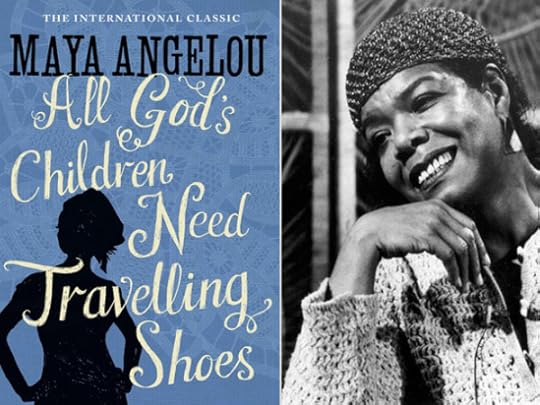
We were Black Americans in West Africa, where for the first time in our lives the color of our skin was accepted as correct and normal.
This is a story of an outsider in Ghana, but it’s so much more. It’s a political critique, a deeply personal memoir of a mother and son, Black identity, African identity. While Maya Angelou takes you to dark places, she never lets you forget a poet is leading the way, with sentences filled with emotion that cover the range of humanity, this is a wonderful introduction not just to Ghana, but our own worlds and identities. It builds on the narrative of I Know Why the Caged Bird Sings and Gather Together in My Name. Do yourself a favor, whether you’re planning on going to Ghana or not, read it.
2. The Jaguar Smile: A Nicaraguan Journey by Salman Rushdie
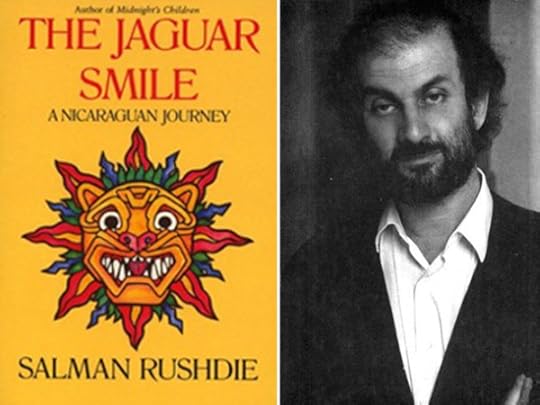
To understand the living in Nicaragua, I found, it was necessary to begin with the dead. The country was full of ghosts. Sandino vive, a wall shouted at me the moment I arrived, and at once a large pinkish boulder replied, Cristo vive, and what’s more, viene pronto.
I’ve always enjoyed the tapestry and complexity of everything Salman Rushdie has written. He doesn’t do predictable plots. And this narrative is characteristic of his fiction — it’s pointed, wonderfully written with large words for even larger ideas, and it uncovers the layers to a country I only know about through random headlines. In The Jaguar Smile, Rushdie brings to life people, politics, history, and of course, place.
3. In an Antique Land: History in the Guise of a Traveler’s Tale by Amitav Ghosh
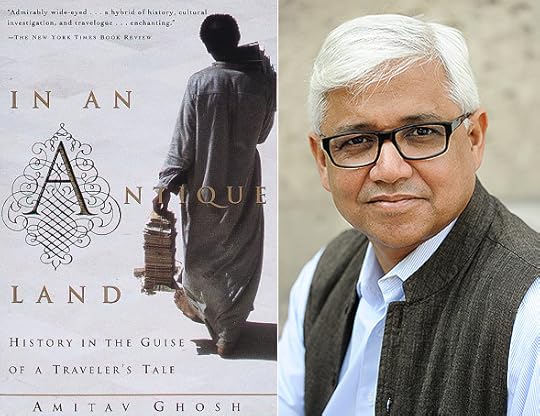
I first began to dream of Cairo in the evenings, as I sat in my room, listening while Abi-Ali berated his wife or shouted at some unfortunate customer who had happened to incur his displeasure while making purchases at his shop.
Amitav Ghosh has written many gorgeously penned novels and the most devastating essay on the 1984 pogroms I have ever read, so I immediately picked up this work when I heard about it. It’s a wonderful mix of history and narrative, including what he does best — the first person. Whatever you want to call it — fictionalized memoir, historical non-fiction, paranormal dystopian vampire romance (okay, not really) — it’s a great read.
Ghosh traces the journey of an Indian slave to a small Egyptian village. He begins the story with historical facts, written a strong voice driven narrative. But rather than tell only the story of an Egypt from several hundred years ago, he also tells of the modern, mingled with the traditional state of this Egyptian village.
4. My Invented Country by Isabel Allende
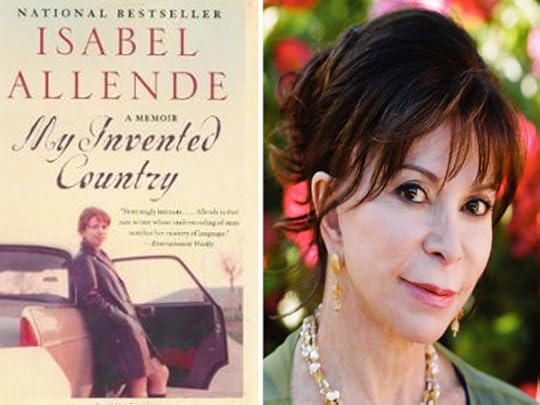
Let’s begin at the beginning, with Chile, that remote land that few people can locate on the map because it’s as far as you can go without falling off the planet.
Isabel Allende doesn’t just write stories, she loads them up with dynamite first. Every single thing I’ve read of Allende’s, from her short stories to her novels, I have been completely absorbed by. Just like the strong sense of place in her novels with politics and beautiful landscapes, this travel memoir is about all of these things infused with the personal: the concept of home. She talks about Chile as home, it’s what she carries within her and is inseparable from her identity — just as the United States becomes without her fully realizing it until September 11. She tackles the nuances of other countries in Latin America, like the open machismo in Mexico compared to its subtler form in Venezuela.
5. A Small Place by Jamaica Kincaid
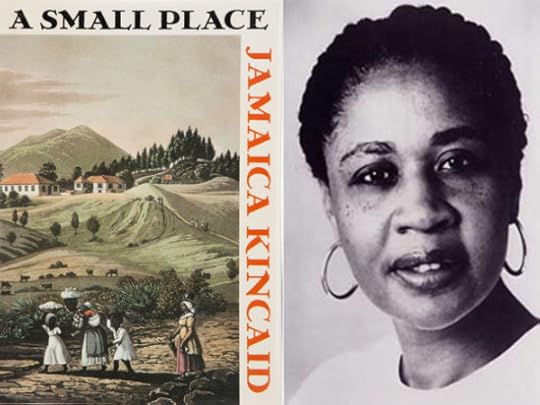
As your plane descends to land, you might say, ‘What a beautiful island Antigua is’ — more beautiful than any of the other islands you have seen and they were very beautiful, in their way, but they were much too green, much too lush with vegetation, which indicated to you, the tourist, that they got quite a bit of rainfall, and rain is the very thing that you, just now, do not want, for you are thinking of the hard and cold and dark and long days you spent working in North America (or, worse, Europe), earning some money so that you could stay in this place (Antigua) where the sun always shines and where the climate is deliciously hot and dry for the four to ten days you are going to be staying there…
This tiny 10-by-12-mile island is brought vigorously to life with Kincaid’s beautiful essay. I could give you more of a synopsis, but after reading the excerpted sentence above, I dare you to keep from reading the rest.
6. Running in the Family by Michael Ondaatje
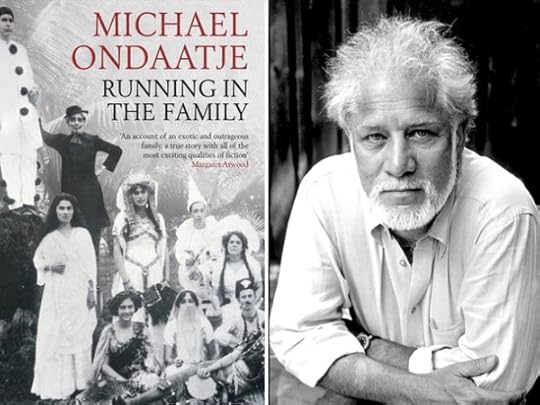
Drought since December. All across the city men roll carts with ice clothed in sawdust. Later on, during a fever, the drought still continuing, his nightmare is that thorn trees in the garden send their hard roots underground towards the house climbing through windows so they can drink sweat off his body, steal the last of the saliva off his tongue.
A travel memoir from the same guy who wrote The English Patient and Anil’s Ghost? Yes, please.
I had to have it as soon as I saw it lying in a heap of books on a blanket outside a train station somewhere in South India. I forget how much I paid, but I was for sure overcharged because I couldn’t contain my excitement that it existed and that I’d found it.
Running in the Family has history and family lore pumping through its veins. It’s an absolutely fascinating journey into Ondaatje’s Dutch-Ceylonese lineage, filled with what makes his novels so intriguing — he is able to seamlessly bring characters to life as well as the spaces that they inhabit.
7. From Heaven Lake — Travels Through Sinkiang and Tibet by Vikram Seth
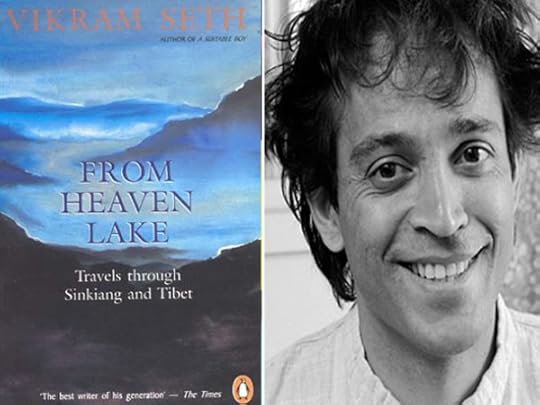
The flies have entered the bus, and their buzzing adds to the overwhelming sense of heat. We drive through the town first: a few two-storey buildings of depressing concrete, housing government offices or large shops — food stores, clothing, hardware.
I picked this book up in Lhasa without ever having read Vikram Seth’s novels. I’d heard about the goliath of his Suitable Boy, in college, of course, but it was all about white literature in my undergrad and postgrad years. So I never read anything by people of color aside from white academic approved texts — Jhumpa Lahiri, Salman Rushdie, Arundhati Roy, Pico Iyer.
I found this at a book stall and had to read it immediately. I was pretty much doing Seth’s exact journey without knowing it. I had just finished teaching in China for two years and was heading to India to meet up with my sister and parents by hitch hiking through Tibet and Nepal. Vikram Seth left his graduate program at Nanjing University and hitchhiked back to New Delhi through Tibet.
Seth brings out colourful characters and weaves politics like magic. Unfortunately I’ve never read the entire 1,000 page novel of Suitable Boy, but man did I make a valiant effort. I made it to page 643 and it’s still bookmarked from six years ago — a year before my daughter was born. One day.
8. A Turn in the South by V.S. Naipaul
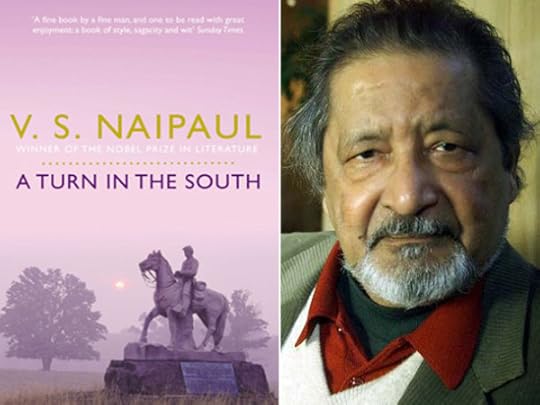
The land was flat, like the pampas of Argentina or the llannos of Venezuela. But trees bordered the fields and gave a human scale to things. We passed tobacco barns, tallish, squarish, corrugated iron structures, where in the old days tobacco was cured. They were in decay, the corrugated iron rusted dark red, the wood weathered gray.
Naipaul is a world class jackass with deep-rooted misogyny and right wing, fanatical racist Hindu beliefs that re-envision history. Plus, he very quickly jumped on the “Islam is the devil” bandwagon before it was truly popular — but goddamn, he can tell a good story.
The writing in his travel book is sometimes totally on key with the characters brought to life with keen observation. And the topic of race is so uncomfortable for the folks in the book contrasted with Naipaul’s indifference about it, that it’s almost comedy. He covers areas in the American South, from Atlanta to Charleston, Tallahassee to Tuskegee, Nashville to Chapel Hill.
9. Tell My Horse: Voodoo and Life in Haiti and Jamaica by Zora Neale Hurston
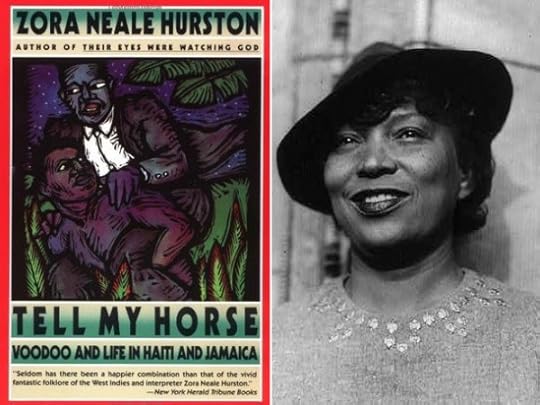
Jamaica is the land where the rooster lays an egg. Jamaica is two percent white and the other ninety-eight percent all degrees of mixture between white and black, and that is where the rooster’s nest come in. Being an English colony, it is very British. So in Jamaica it is the aim of everybody to talk English, act English and look English. And that last specification is where the greatest difficulties arise. It is not so difficult to put a coat of European culture over African culture, but it is next to impossible to lay a European face over an African face in the same generation.
This is written by Zora Neale Hurston. That, in and of itself, should be enough to make you want to go out and buy it. If not, I’ll add one more thing: it’s about VOODOO. More specifically, it’s the normalization of Voodoo and other spiritual beliefs that allows it to be genuinely explored through her personal experiences in both Haiti and Jamaica. A wonderful, wonderful book. This ain’t no minstrel show.
10. Butter Chicken in Ludhiana by Pankaj Mishra
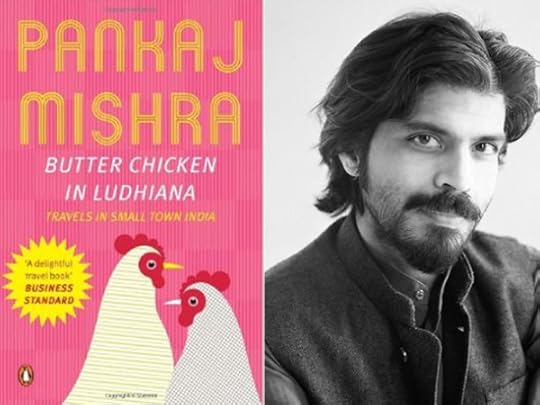
Elsewhere, I found a ‘fast-food’ restaurant where a pizza was grated Amul Cheese on sliced white bread, and a vegetabe burger consisted of tikki slapped between two fruit buns. The restaurant, however, was crowded; duplication, however inept, was paying off. For instance, the muzak at this restaurant, which was of India’s biggest non-film musician: a Rap singer from Lucknow, who, by defltly replacing socia comment with inane chatter, had turned himself into a millionaire. Significantly, hiw mist successful album was entitled Main bhi Madonna, roughly as Me too Madonna.
Butter chicken has its roots in Mughlai cuisine and is what Punjabis in dhabas serve to outsiders. Even though it has nothing to do with canonical Punjabi food, it’s also ubiquitous throughout India as Punjabi khana. Let the fools have their butter chicken.
This isn’t Pankaj Mishra’s usual hard-hitting, incisive, research-heavy style of writing. Nor is it a look at the political machination of the butter chicken industry. It’s an incredibly well written book about a small town in Punjab by someone with a traveler’s soul. He attempts to humanize the people he meets without forcing his own ideology and there are of course certain heavy themes like the new Indian middle class and the Indianified toxic capitalism that reigns free, but overall this is a character driven story. We see wit, insight, and scenes with shopkeepers talking about planning holidays in London. Come for the Butter Chicken, stay for the wit and insight (new tourism campaign for Ludhiana). 
This article originally appeared at Ishq in a Backpack and is republished here with permission.
14 signs you're from Charleston

Photo: Kyle Jackson Photography
1. You’ve had hundreds of pet fiddler crabs.
You didn’t even have to go looking for them, somehow they found a way into your home. Eventually you probably got bored with them and used them as bait.
2. You talk with that lowcountry twang unique to Charleston.
You understand Geechee Gullah, and can even speak it. You know and use the word “kooray,” but you’re not sure how to spell it. You know the proper way to pronounce Vanderhorst, Huger, Legare, and Gaillard.
3. You love the smell of pluff mudd and the color “Charleston Green.”
4. You’re never in a rush, and you’re always polite.
You walk slowly and you talk slowly, because it’s too damn hot to over exert yourself. You smile and nod at everyone you pass in the street, whether you know them or not. You always hold the door open for people, and saying “yessir” and “yes ma’am” is second nature.
5. You can navigate through the marshes, cricks, and rivers with your eyes closed.
You learned to drive a boat way before a car. Depending on the tide, you know the best places to get shrimp, oysters, clams, crabs, and fish.
6. The sight of dolphins no longer excites you.
And seagulls are nothing but pests.
7. You’re accustomed to spending long periods of time in damp clothes.
You know that the moment you step outside in the summer you will be hit with a wall of heat and humidity so thick your sunglasses will fog up and you’ll start sweating profusely.
8. You don’t throw away worn-out tennis shoes.
As a kid you’ve suffered lacerations from oysters, clams, and other sharp objects in the mud. You probably have a pile of old tattered muddy shoes tucked away somewhere to have on hand for venturing out into the marshes. You’ve unintentionally made several shoe sacrifices to the almighty pluff mud god.
9. You know where the Mason Dixon line is located.
You refer to anyone hailing from above it as a “yankee,” and you think the South is better off without them. You don’t trust democrats, or anyone who prefers their iced tea with no sugar. You also have a slightly negative sentiment towards Savannah, because you blame them for being the reason we lost “The War of Northern Aggression.” You know all of the words to the old confederate song “Dixie.” You, or someone you know, is a member of the patriotic organization “Sons of the Confederacy.”
10. As a child, your biggest fears were: hurricanes, driving over the old Cooper River Bridge, and being in houses that didn’t have “Haint Blue” porch ceilings.
Your recollection of life events is either dated “before Hugo,” or “after Hugo.” You know how to board up windows, and probably have a special emergency supply of food stowed away somewhere just in case. You probably held your breath and crossed your fingers as you crossed the river on the ancient 2 lane bridge that looked as though it could collapse at the slightest breeze. Blue paint on the ceilings was intended to keep away wasps, evil spirits, and nightfall.
11. You’ve witnessed people kayaking, or even wake-stating in the streets.
You know to stay away from downtown if there happens to be a heavy downpour during high tide because the city can quickly flood several feet in minutes causing terrible traffic, and houses and cars to flood. But it can also be a good excuse to call in late to work and bust out the water toys.
12. You always dress to impress.
Ladies- you know the difference between heels, wedges, pumps, and stilettos and most likely own at least one of each, in every color. You are an expert at walking in them thanks to years of maneuvering though cobblestone streets, 200 year old cracked up driveways, and crooked porches and houses. You also own a pearl necklace, and multiple accessories containing your monogrammed initials or a palmetto tree. Men- you own a seer sucker suit, and multiple bow ties, pastel shirts, croakies, and visors. All of your visors are discolored and stained from sweating profusely.
13. You were surprised to learn that not every house has porches.
As a child you thought that crooked, 2 story high porches was the norm. You thought that all docks were at least 100 ft. long, and that all yards had a joggling board.
14. You don’t eat breakfast, lunch, and dinner, you eat breakfast, dinner, and supper.
Sunday dinner always included rice and Bloody Marys. Grits is not just for breakfast, and you drink sweet tea with every meal. She Crab Soup is only one ounce of sherry away from becoming a cocktail. You have eaten oysters prepared in every way possible, and you know that peanuts are way better boiled. You know that the best place to get boiled peanuts is on the side of the road, where you can also buy baskets weaved out of sweet grass from the Awenda Basket Ladies. 
February 8, 2015
The stories of our travel mentors


1
"On the surface he might have looked like a typical tourist, with pale white skin which often burnt under an English sun let alone an African one. He always wore khaki-style trousers and shirts, and kept a phrasebook in the front zip of his rucksack. But my dad was as far removed from your notion of a 'tourist' as it is possible to be. He hated beaches and hotels and craved culture, interaction, adventure, and meaning. He set up multiple charity links around the world with our school, and when he took me to Rwanda with him I saw first hand what sort of impact he was having on communities there.
Perhaps the juxtaposition of the super-tourist look versus his nature and attitude made people love him more. Either way, to hundreds of people he was a father, an uncle, a friend. He was inspirational in ways few of us can only hope to be. And so he never wanted me to simply 'travel'. He wanted me to explore, to experience, and to learn. He always took us to somewhere new whenever he could get time off work, and although being perched on his shoulders gazing at a Scottish loch might feel very distant now, every new country still brings another experience, another memory, another acquisition of knowledge, and a forever thankful son."
Jeremy Ullmann

2
"Bruce Parry spends a month with indigenous groups all around the planet, from the chilly wilds of Siberia to the humid rainforest of the Amazon. In this time, Bruce goes to extreme lengths to integrate himself, even when it is painful, like undergoing traditional piercings, dangerous, like bull jumping, or cause him to vomit uncontrollably -- like trying ayahuasca.
He now appears on the BBC, bringing issues faced by indigenous communities to the fore. For me, it is his eloquent description of returning home and never being able to truly fit back to reality. The feeling of constantly looking for the next adventure, the next untouched corner of the world to explore with a relentless hunger that makes the humdrum of day to day life almost unbearable. An admirer for years, as I re-watch episodes I am reminded of important lessons I have learned on my own travels. To slow down, take time, push yourself, to protect what you find and never ever be afraid of a language barrier!" (Image © BBC 2004)
Samantha Jenkins

3
"My point of inspiration is Greg Marinovich. I met Greg in the early '90s, shortly after he won his Pulitzer. At the time, I was wondering if photography and travel would ever intersect with my long-term interest in social justice. I don't recall what Greg said during his presentation; I do remember most of what he told me during the "meet-and-greet" following his slide show. He said, and I'm paraphrasing:
"Just seeing someone — especially a mother over a young child or a young fighter or a young civilian who's being killed — and that look they give you as you come to photograph them, while you're kind of apologizing about photographing, is so humbling."
At that moment, I knew my path was set and my destiny was forecast. I didn't know it would be close to ten years before life circumstances and my skill set would merge and allow me to travel and turn my camera — and pen — on social justice issues globally." Photo: Via
Jerry Nelson
Intermission
134
The 22 craziest party hostels around the world
by Matt Kepnes
184
12 differences between a normal friend and a Spanish friend
by Ana Bulnes
1
Shut down in Egypt: One artist’s story of struggle and oppression
by Becky Hagan-Egyir
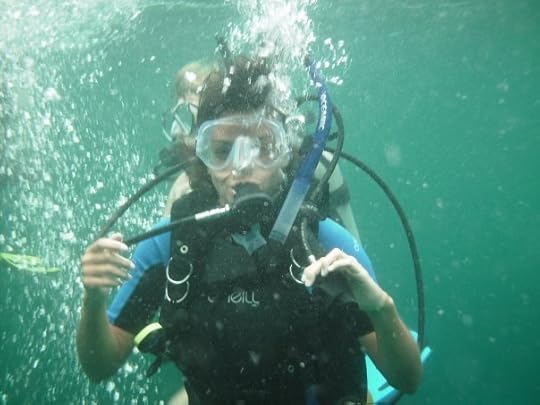
4
"She called home after talking her way into the country, riding a golf cart up a steep mountainside, and readying herself to sail by catamaran around the Windward Islands.
My older sister, Melissa, is my travel mentor. She left our Midwest home to study oceanography and coral reef restoration after high school. While living and working in the Florida Keys, I came to visit, and she chartered a snorkel boat to take me to the living brain coral she had transplanted herself. In many ways, my sister reminds me of a female Jacques Cousteau, her head always underwater, discovering a new creature, cavern, or species. Melissa traveled to Honduras to become scuba certified, then sailed the Caribbean by catamaran. She taught scuba diving and slept under the stars every night for months. After hearing her travel tales, I knew I’d go on to do some exploring of my own."
Jill Kozak
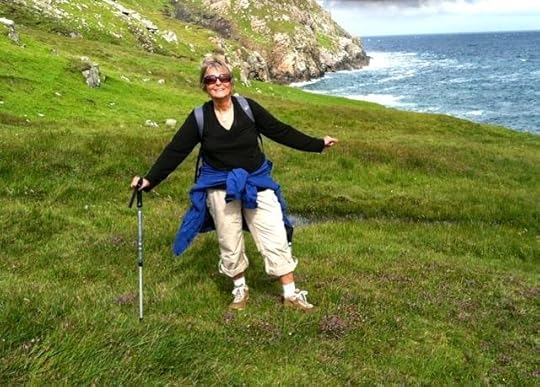
5
“That’s hereditary” usually follows something negative, but every time I get an email blog update from my expat Aunt Pupsi, I smile, knowing that whatever is in her blood is definitely in mine. Most people over 70 don’t tend to have a blog, especially one chocked full of adventures experiencing different countries and cultures, but she does. I continuously try to tag onto her epic escapades to Scotland and Oman and Argentina and wherever her heart desires, but the truth is, I can’t keep up with the “old lady.” Instead, I follow her advice carefully, embrace her unfettered strength to live life fully, and plan for the best-selling biography I’ll write about her one day."
Sara Schneider
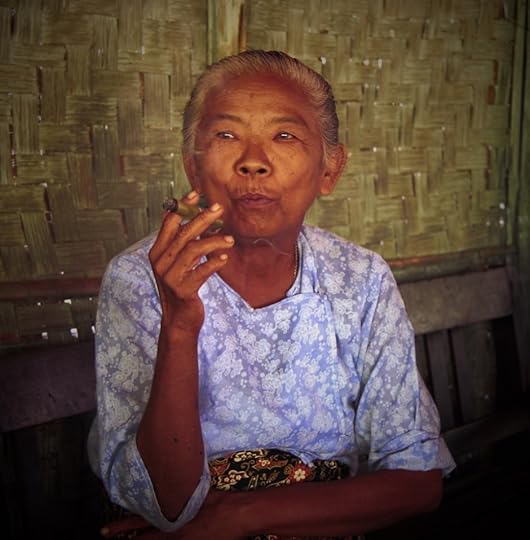
6
"For me, wise old women have always been a staple part of life. My wonderful grandmother, my next door neighbor, my 1st grade teacher — I’ve always found myself soaking up the wisdom of the women around me. I guess it’s not too surprising then, that on my first trip to Asia, I found myself sidled up to this beautiful Burmese grandmother at her son’s restaurant in Bagan, sharing a cigar and talking without speaking any of the same languages. It’s people like her that make me feel comfortable yet fascinated when I’m away from home, and it’s that feeling that keeps me tirelessly exploring the world."
Doree Simon
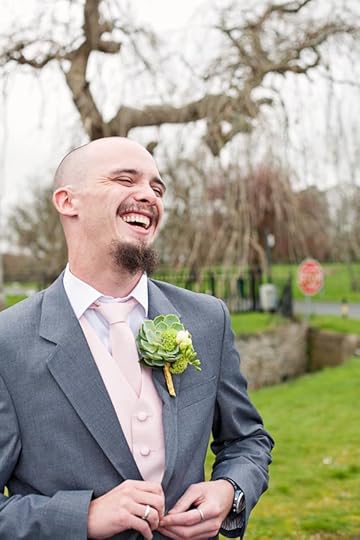
7
"Adam Gaine, a 27 year old from Ireland was venturing around the United States on an orange Honda Shadow motorcycle when he approached us outside of Mac's Tavern (the one owned by Rob McElhenney) in the Old City District of Philadelphia. A few Camel Crushes and five 10 percent Felony IPAs later, we found ourselves on the fire escape of our hostel, sharing travel stories and hopes for future adventures.
He told us about a patient of his back home who he gives round-the-clock care to, Simon Fitzmaurice. Diagnosed with Motor Neuron Disease and left paralyzed, Fitzmaurice has written a book, It's Not Yet Dark, and an upcoming film My Name Is Emily, entirely with the use of an eye gaze computer. Adam's passion and energy in speaking of Fitzmaurice, as well as his stories of his journey through the US and Africa, fueled me throughout the rest of my own travels. It's funny how strong a connection can be developed in a simple meeting, and how such pain can be felt in parting ways with someone I've only spent a total of eight hours with."
Shannon Gadberry
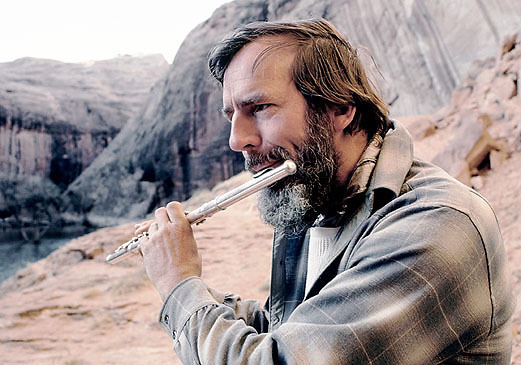
8
"I read Ed Abbey's book, Desert Solitaire, on the train back from my first solo trip to the Southwest. A week later, in Rochester, NY, I read The Monkeywrench Gang, and knew what I wanted to do with the rest of my life: road trip, hike, and rock scramble in the desert Southwest -- and fight for that country. I've done that for exactly thirty years. Next week, I'll head out to the Mojave Desert to find new places I've never moved across before and I'll fight to keep them free from corporate solar installations." Photo: Via
Mary Sojourner
US coal emissions [chart]
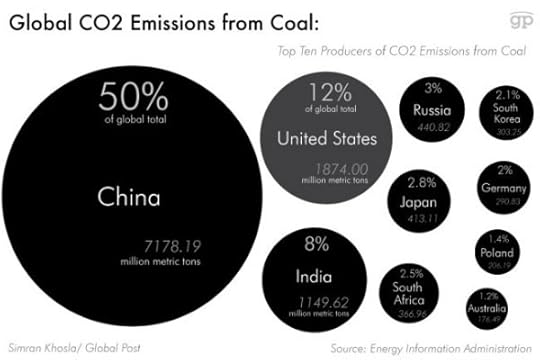
Take a look at how United States CO2 emissions from coal stacks up next to the rest of the top-10 coal-based polluters.
Though second to China, which accounts for a whopping 50% of the total global CO2 emissions from coal consumption, the United States still contributes a substantial amount of carbon dioxide from coal use, accounting for 13 percent of the global total. 
By Simran Khosla, GlobalPost
This article is syndicated from GlobalPost.
February 7, 2015
Drone footage of Shanghai
Follow Matador on Vimeo
Follow Matador on YouTube
IT’S BECOMING MORE AND MORE EVIDENT that drone technology is something the travel industry will start investing in. These high-quality, non-obstructive cameras are able to capture the clarity of Shanghai, despite its pollution problem. Even with a population of over 14 million people, this video footage is able to zero-in on what the city truly has to offer — a diverse, proud culture, other-worldly architecture, and a unique system of infrastructure. Cheers to Cian Greaney for sharing this city through the smog. 
Contraception fights climate change

Photo: Leigh Righton
The problem is simple: the world’s rising population is responsible, among other consequences, for more greenhouse gas emissions, the reduction of resources such as food and water, and greater deforestation. In other words, the bigger the families, the worst off we’re all going to be.
The point is not to ban people from having children, but to give every one the option to not have large families. In most of the developed world, women have access to contraception and have the possibility to terminate pregnancies, but there is still a lot of work to be done everywhere.
According to the Huffington Post, “in Pakistan, where just a third of married women use contraception, half of all pregnancies – 4.2 million each year – are unintended.” Giving every woman the possibility to control their pregnancies has been pinpointed as a crucial aspect of slowing down climate change.
International climate change funds could be allocated to creating family planning projects in areas of the world where contraception is not widely available, explains Laurie Goering for the Huffington Post. Financing such projects could not only help our planet, but could also greatly empower women all over the world.
So, on Valentine’s day, have protected sex and then congratulate yourself. You will have helped 7 billion people. 
Business happens in Korean brothels

Photo: TomEats
SEOUL, South Korea — “It’s not fair!” complained a South Korean sex industry aficionado, a former “consultant” for a large call girl website. “The tax men are hurting business! Cracking down on company cards!”
The consultant, a 32-year-old, chiseled and rakish figure who, as a youngster, mingled in gambling dens and street gangs, is outraged over mounting government scrutiny into South Korea’s executive sleaze.
You see, just as companies stateside pick up the tab for employees’ lunch meetings, in Korea they subsidize business entertainment — which tends more toward hard core boozing and even the country’s sex trade (never mind that prostitution is illegal).
Not far from glitzy office towers of Seoul are the frenzied hangouts where business is really done: a cacophony of karaoke joints, shady neon-lit parlors, and cluttered barbecue restaurants full of drunken managers ordering their junior staff to pound shots.
To Koreans, the business districts of American cities appear staid, orderly and a bit dull. A shop-worn joke here has it that North America is a “boring heaven” while their country is an “exciting hell.”
No salesman (and the majority are men) gets far here unless he can sing mean, inebriated karaoke and then slug through negotiations the next morning with a thumping headache. South Koreans slam the world’s largest quantity of hard liquor, imbibing 11.2 shots of soju per week, more than twice the average Russian’s vodka consumption (although soju isn’t always as strong).
What happens when this macho after-hours culture goes too far, littering the company tab with payments to prostitutes and hostess clubs? “That’s the business model we depend on. When the Korean men are doing business together, they hang out at these places,” explained the sex industry consultant.
There’s a dark logic to the debauchery.
“When you’re a man and you do something dirty and sinful with your business partner around, you share your secrets, you share trust like brothers. You can always trust your new business partner.”
“At the highest end, people in this industry used to offer up failed celebrities, really sexy ones with killer bodies, as hostess girls for Korea’s richest men,” the consultant reminisced. (He spoke to GlobalPost on condition of anonymity, which is customary in South Korea.) “You know, the powerful men you read about in the news. Top tier. Only the wealthiest executives could afford it. But it’s getting harder to sell with the tax police all over it!”
South Korean civic groups and a few lawmakers have long pushed to clean up business and make it friendlier to women and immigrants. Last month, the government tax body finally put a number on the excess, reporting through a conservative lawmaker that $1 billion was spent on corporate credit cards on sleazy nighttime entertainment in 2013.
That’s a significant slice of the estimated $8.7 billion companies spent on all entertainment services last year, according to the National Tax Service. Entertainment expenses are tax-deductible up to a limit.
It’s a number that makes women’s groups uncomfortable, not only because of the ethical issues of tapping into prostitution for business deals, but because the glass ceiling stays abysmally low. “There is definitely a discriminatory and exclusionary element at play in that kind of sexual corporate entertainment culture,” said Shin Sang-ah, a consultant at the Seoul Women’s Workers Association, a nonprofit.
“Wining and dining clients or other forms of similar corporate entertainment generally involve male higher-ups in the corporate hierarchy,” she said. “And this goes hand in hand with the fact that Korean women are generally confined to less important roles within social organizations.”
Although prostitution is illegal, some 500,000 women continue to work in the sex industry in South Korea, reports the Ministry of Gender Equality and Family, the body charged with protecting women’s rights. The ministry did not respond to a request for comment on the corporate entertainment report.
Of the total, businesses spent about $733 million on “room salons” — essentially premium hostess bars where young women flirt, drink, and sometimes leave the premises with their clients. In second place at $204 million were “danlanjujeom,” which in an oddity translates to “healthy family saloon.”
Those are slightly lower-level establishments that contract out work to entertainers, explained the consultant. Finally, there’s the $100 million spent at “yojeong,” old-style saloons where women serve you in traditional garb.
Paid sex in Korea is a complicated, compartmentalized business, the consultant explained. There are, for instance, four strata of the fabled room salon.
“Ten-pro” salons hold the most prestige as essentially the private dens of aspiring celebrities, who sometimes linger in Seoul’s finest hotels and bars, seeking a wealthy patron with the help of a trendy club. There are the “15% bars” where the establishment takes a 15 percent cut of the hostess’s earnings, followed by “full salons” where customers dish out for all services up front. The cheapest in the hierarchy, the “hardcore room salons,” can get you a lap dance, body shots, and maybe some action, he said.
Not all clients can dish out loads of cash, in which case they turn to an array of lower-priced hangouts you can read about it here, if you’re really curious.
Higher-end haunts can be exclusive, turning away people without invitations and foreigners, who tend to find their niche in US Army districts.
The government report added that the amount spent on sexual services has been declining over the past five years. But that doesn’t stop South Korea’s highly educated female professionals from crying foul.
“As long as this kind of executive-level sexual corporate entertainment culture is seen as the norm,” said a programmer at a multinational electronics company who asked not to be named, citing the ire of her employer, “it’s obviously assumed that women won’t be willing to participate, and that can definitely exclude them from certain opportunities.” 
By: Geoffrey Cain, GlobalPost. Max Kim contributed reporting.
This article is syndicated from GlobalPost.
February 6, 2015
Finding balance after a back break
Author’s note: Dave and Deb Corbeil started their travel blog back in 2008, cataloging their travels around the world. The Canadian couple has kayaked through the Arctic and cycled the length of Africa, but this past November they faced their biggest challenge yet — while on an adventure trek through the jungles of Amazonian Peru, Dave took a fall that broke his back in two places. I was able to talk with the pair about their experience and how it changed their outlook on life, the future of their fast-paced lifestyle, and a message they’d like the travel community to know.
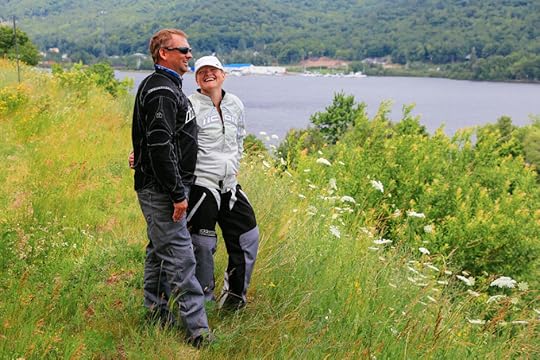
JK: Many have been keeping up on your blog, The PlanetD, but can you describe how the fall actually happened?
Dave: It came out of nowhere. We were on a cruise through the Amazon with International Expeditions, just taking it easy, birdwatching and photographing wildlife. The group had all gotten off the skiff boat to venture through the forest and get closer to local wildlife — this was around 10 am — and I didn’t have my flash with me. Deb and I discussed it for a while — should I bring it, should I not bring it — and I decided to go back to the boat to get it. My feet were incredibly muddy from that brief time off the boat, and by the second step on the stairs, my feet were flying forward in front of me. I was up in the air with my hands protecting my cameras, landing flat on my back, saving my cameras before I saved myself. Though I didn’t know it at the time, I broke both my L1 and L2 vertebrae. It felt unreal.
Deb: I heard his screams and just dropped everything and ran. I had never heard Dave yell like that before. It was petrifying.
JK: With time stopping dead in its tracks, what was the next step to getting “unstranded?”
Dave: The first thing I did — beside scream, of course — was try and move my toes. I could do that, so I was pretty sure I wasn’t paralyzed and that knowledge gave me a moment of clarity. After that, I just receded into the pain. Luckily, there was a nurse on board and she just took over. “Don’t move him, don’t move him!” I can picture her saying. She was fantastic.
Deb: Without her, I don’t know what we would’ve done — my head was all over the place and the guys on the boat certainly didn’t know how to help. The nurse directed them to help lift Dave onto a makeshift stretcher made of pillows, prepped him to move onto the riverboat, strapped him in, and iced his back. The rest was just waiting. They said it would take another 4 hours before they could get a plane to airlift us to Iquitos, and then once the plane finally arrived, the 30-minute flight turned into a six-hour ordeal, landing on the river, taking back off, landing near a small village, and finally taking a tuk tuk into town. It was 10 hours from the point Dave fell to get to the hospital in Iquitos. That day never ended.
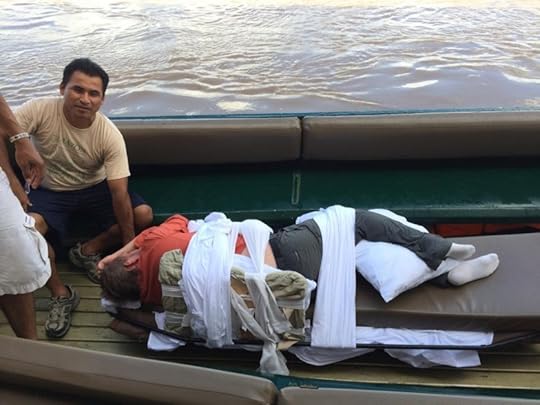
JK: What sort of emotions were you going through while waiting to get to the hospital?
Deb: I was an emotional rollercoaster pretty much the entire time. I was dealing with insurance, and getting him home and talking with doctors — and I don’t speak Spanish, which I was kicking myself for. We did have an interpreter from International Expeditions, but I still didn’t fully know what was wrong with Dave. That first day was awful. We were worried at one point that there was internal bleeding and that he damaged his kidneys, too…there was just all this fear. I started feeling a little better once he got to the hospital and pumped full of painkillers, but even then we had to worry about getting home.
Dave: For me, there were plenty of points during this ordeal where I caught myself reevaluating life. What would my life be like as a paraplegic? If I do get out of this, how am I going to make my life better? All I had during that moment and for the whole next week, really, was time. It made me pretty introspective, seeing life through a brand new lens.
JK: During all this, it seems like you both managed to stay pretty level-headed. Dave, you even told Deb to start taking photos. Did you know it was going to be okay?
Deb: I didn’t even think of taking photos until we got Dave back to the main boat, about 45 minutes after the initial accident. Then we got into the room, got him iced, and that’s when Dave started getting more coherent. ”You better take photos!” he reminded me adamantly. And it was clear he was in a lot, a lot of pain, but it didn’t feel life-threatening at that moment. We had no choice but to wait, so I finally did get on my phone and started making updates and posting on Facebook. I remember adding to the photos: PS — Dave told me to take these!
Dave: Well, yeah, we knew we were gonna be there for hours, me just lying there and both of us waiting until we got to Iquitos. What else could we do? At that point, you just kinda have to accept the situation for what it is. But it wasn’t until we left the hospital in Iquitos a week later and got back to Canada that I was told I would make a full recovery, and it wasn’t until then that I allowed myself to believe that it would be okay.

JK: What was an episode of pain like, before and after getting to the hospital?
Dave: It’s hard to describe. It starts localized and then takes over your entire body. You feel like you’re going to die. That’s the only way to put it. I remember thinking “I don’t know if I’m strong enough to make it through this,” as I was laying there, sucking in gas fumes from the floor of that float plane.
Deb: You were just gray. I remember you kept saying, “I’m not gonna make it, I’m not gonna make it.” It was just this feeling of helplessness for me. All I could do was watch him suffer through the pain, with no painkillers that entire first day.
Dave: And then even during recovery in Iquitos the meds caused so many side effects it was like reliving it all over again. I even got a bleeding ulcer, which was insult to injury, and never once in Peru did they give me any meds to combat the side effects. By the time I had gotten to the hospital in Canada a week later, the pain had completely changed, but was still there. It was just a different kind of pain. But once in Canada, things did quickly start to get better.
JK: It’s been about 2 months now. How is the path to recovery holding up?
Dave: I’m finally off my painkillers now and I’m not perfect, but I can see the light at the end of the tunnel. It’s sore, for sure, but the pain is not unbearable. Physiotherapy is helping quite a bit. I’m still hyper aware my back — if I lift something, I’m thinking about it. If I’m going up the stairs, I’m thinking about it. I’m not sure that will ever go away, but I’ve made great strides at improvement and I’m almost there. They said 3 months until full recovery, and so far so good.
JK: You guys are quite lucky, really.
Deb: Definitely. Dave was sitting up within a couple days of being in Canada and just a day after that he was taking his first step. We’re really lucky, actually. We couldn’t have asked for it to go any better. We just went out shopping the other day and we were both thinking, “Can you believe where we were two months ago?”
Dave: Yeah, the doctors said that if it had been an inch or so to the left, I would’ve become paraplegic. I would’ve hit the nerve around L1 and L2 and that would’ve been it. But instead, I just broke both of those vertebrae, and one is already completely healed and the other one is almost there. With that knowledge, the mental game is a lot easier.
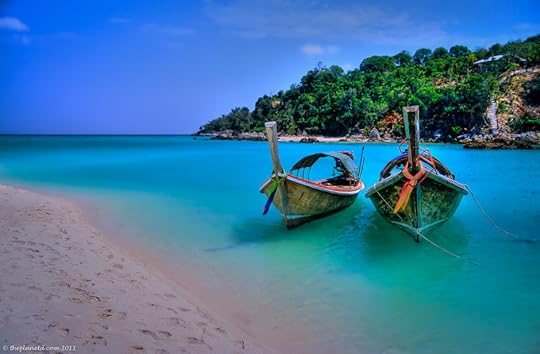
JK: Has the support come out in droves? Fans sending fruit basket after fruit basket?
Dave: It’s been incredible. Wow, what a powerful community. It took this terrible ordeal to make us realize how great our circle of friends is in the travel industry and how much support we have. It’s really validated why we love the travel world and the people we’re surrounded with. We’ve gotten postcard after postcard from all over — it was really overwhelming in the best way. Even strangers from far and wide — from here in Canada to kindly strangers just dropping a line from Singapore. It was emotional and incredible.
Deb: It really made us realize the amazing friends we’ve made over the past few years. I’ve always thought that travelers are, by nature, just giving. It’s really validated that. We’ll spend hours reading our messages and I’ll cry and Dave will cry, and more flood in daily — it’s really opened our eyes. Things do happen for a reason, huh?
JK: Has this incident changed anything, like your definition of danger, or what you’re willing to do on your adventures?
Deb: This happened on such an easy trip, on a boat where there were fourteen-year-olds and eighty-year-olds. It was just a bird watching cruise! It could’ve happened at home and to anyone. We weren’t climbing a mountain or pulling sleds across the Arctic, you know?
Dave: No, we’re not going to let it. I’m not going to be constantly thinking “Oh, I could slip here” or “I don’t want to do that because of my back.” It wasn’t physically challenging or anything, so no. It’s not going to change how we travel, or at least what we do while we’re traveling. We want to slow down in general, but it hasn’t changed what we’re willing to do or what kind of challenges we’ll take.
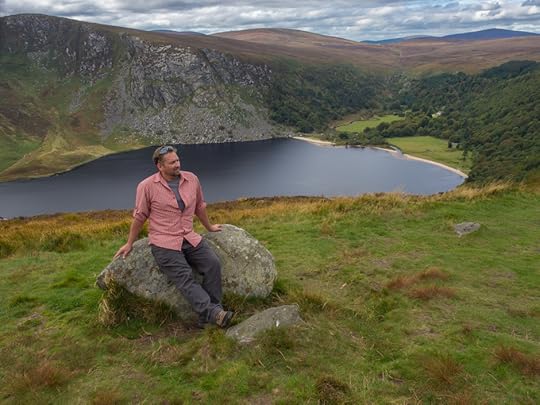
JK: Slowing down? Where do you see The PlanetD in the coming months and years?
Deb: We were really focused on work last year. We had tunnel vision before this. It was like, “Wait a minute. Life is short. What are we doing?” This showed us that we need to stop and enjoy it and smell the roses. So from now on, we’re gonna slow down and go back to the way we used to travel, spending a month here, spending a month there. This last year, spending 2 weeks in one place was heavenly. If we go somewhere and we miss a shot because the weather sucks, now we’re gonna sit and wait. We’re gonna enjoy ourselves.
Dave: I think that’s a trap a lot of entrepreneurs fall into – they get so laser-focused on their business and neglect the rest of life. This incident made us stop and sit down and realize, “Hey, you know what? We can lead a life of balance, we can lead a life of fulfillment, and we can have both success in business and success in life. It’s just a matter of prioritizing and finding out what’s important and what you value.
JK: What do you say to those wanting to “be” you, especially now that you’ve seen both sides of this dramatic lifestyle?
Dave: Start out with an idea of balance. It’s easy to let one part of your life consume you. Work balance into your business plan and your goals and you can even be more successful.
Deb: Yeah, I’d say travel for the love of travel first. So many people now say, “I want to be a travel blogger,” and that’s great — but you need to do it for the love of travel, for the love of a destination. Be in the culture. Be in the moment. Fall in love with travel first before you try to make it a career. We traveled for a decade before we tried to make a go of it. Don’t fabricate it — let it come to you. Let your story happen; don’t force it.
Dave: Yeah, we traveled for a decade before we started blogging about it. It brought us together and ours is a story of our life. It’s not fabricated. Travel to us was about coming together and it just kind of happened. So yeah, let your story happen. If you try to make it happen, it’s not going to.

JK: If there was one lesson you learned from all of this, what would it be?
Deb: For me, it’s 100% be present in the moment. For the past year or two, we haven’t been as present as we should be. We’ve been letting business take over and looking at “elsewhere,” not really appreciating where we are. This incident has brought us back and reminded us of why we chose this life in the first place.
Dave: On a more practical note, get travel insurance! If you don’t travel with it, here’s a perfect example of why you should. They almost sent the army to rescue us; would we have been paying for that for the rest of our lives? And we work with AmEx credit cards, not AmEx travel insurance — so we’re not even paid to say that! 
Canadian train plows through snow
While the rest of the world curses winter weather, Canada deals with it like a boss.
According to Global News, “over 100 centimeters of snow has covered New Brunswick in the past two weeks”, which explains the large snow drifts the Canadian National railway train featured in this video plows through with unbelievable ease. A surprising sight that shows that Canada handles blizzards like no other nation.
The man holding the video might have been a tad too close to the tracks as, when the train arrived besides him, he got covered with snow. He confessed to Global News: “I was thinking: ‘I’m going to get a little snow shower here’ […] but me and the camera survived.” 
11 signs you're a Filipino traveler

Photo: whereisria
1. You have a cutout of someone’s foot in your wallet.
Someone back home wants you to buy him a pair of shoes as pasalubong. To avoid getting the wrong size, you had him trace his foot on a piece of paper and cut it out. The store employee gives you a weird look when you whip out that paper foot and press it against the back of the shoe you want to buy.
2. You know how to pack a balikbayan box.
It may not be the most glamorous way to go on transit, but your international travel isn’t complete without a balikbayan box. Through trial and error, you’ve learned to pack and seal the box without going over the allotted check-in weight. When you spot other Filipinos in airports, you can guess what items they’ve packed into their boxes, such as Nike shoes from outlet stores and hoards of imported chocolate.
3. You go crazy in US outlet stores.
Where else can you find your favorite brands such as Nike, Old Navy, Michael Kors, and Coach for ridiculously marked-down prices? Shopping is the number one priority on you itinerary and you can’t resist a good sale.
4. You spend on pasalubong.
You haven’t even left the Philippines yet and you already purchased packs of dried mangoes, “Pinoy Pride” shirts, and other pasalubong (gifts) for every single relative and friend you’re going to see abroad. While on vacation, you spend a few hours to a whole day just for pasalubong shopping for loved ones back home.
5. You convert everything to pesos…
Just to make absoutely sure you’re getting a good deal. And when it’s not, you complain that we can get it for a steal back in the Philippines.
6. You hoard souvenirs and freebies.
The hotel toiletries and complimentary coffee sachets go straight to your bag. As if outlet shopping wasn’t enough, you browse through every souvenir stall at tourist spots to see what you can buy for yourself and your friends. “Seven ‘I Love Las Vegas’ key chains for $10? I’ll take it!”
7. You cross the street too cautiously.
Because you’re so used to the Armageddon-like streets of Manila, you forget that crossing the street in first world countries like the US is not as life-threating as crossing EDSA.
8. You take pictures of everything. Everything.
Every statue, every garden, every dish you ate, every dish you wanted to eat, every character in Disneyland, and even the front signage of a place you didn’t actually enter, but just happened to pass by.
9. You start to miss rice.
After days of eating just pasta, croissants, noodles, or whatever dishes are native to the country you’re visiting, you begin to miss your favorite Filipino ulam with heaps of white rice. Is there a Filipino restaurant nearby?
10. You find the food portions ridiculously big.
When visiting non-Asian countries, you can’t really finish your food because you’re used to the Asian-sized portions back home. Then after a while, you stomach adjusts and you begin to pile on vacation weight.
11. You pepper your sentences with na lang, diba, ha, and nga.
You can’t help it. No matter how hard you try to speak in straight English, you unintentionally find yourself uttering untranslatable Filipino expressions. Diba? 
Matador Network's Blog
- Matador Network's profile
- 6 followers



